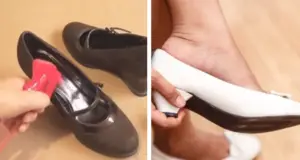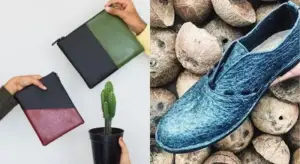How to fix Leather sofa peeling (7 Causes)
Leather sofas are a popular furniture choice for many homeowners because of their durability and sophisticated look. However, leather sofas can sometimes suffer from peeling, which can be unsightly and costly to repair.
In this blog post, we’ll explore the potential causes of leather sofa peeling so you can be informed and take steps to prevent it from happening to your furniture.
We shall also discuss how to fix a peeling leather couch and recommend the right products.

Why is my leather sofa peeling?
One of the reasons why leather sofas and couches begin to peel after some years is that the leather may not have been properly treated when it was manufactured. Another reason is that the leather sofa was exposed to UV light for too long. Also, it might be due to not taking proper care of the leather furniture.
Let’s explain these causes further.
1. Poor quality leather
Peeling leather is typically a sign of subpar leather or bad construction.
If this is happening to your sofa, chair, or couch, it’s probably because the hide wasn’t handled properly throughout the tanning process.
The leather’s natural oils may degrade as a result, increasing the likelihood of the sofa drying out and peeling.
Also, your sofa may be peeling because it is made of fake or bonded leather because real leather does not peel. Fake leather is frequently made of PVC, which ages and peels easily with use.
2. The leather was not sealed properly
Another possibility for leather peeling is that the leather used to make your furniture was not properly treated when it was made.
If the leather is not finished or treated with a polymer, it will eventually peel. You can avoid this by using a finishing agent on your leather furniture.
3. Moisture damage
Another issue is that your leather sofa might have been exposed to too much dampness or water. This could be from spills and other liquids like pet urine.
Leather can begin to rot, degrade, and peel if it is not adequately protected from moisture.
4. Extreme exposure to UV
Leather does not age well under the sun. Particularly if your furniture is placed next to a window, exposure to the sun significantly causes it to fade and dry out.
This is as a result of the natural oil in the leather drying out slowly over time and causing the leather to harden, split and peel.
5. Lack of proper care and cleaning
Anything made of leather including shoes, boots, sofas, and jackets might also peel when cleaned improperly using abrasive cleaners and harsh chemicals.
Harsh detergents and abrasive chemicals should not be used to clean leather furniture. Instead, use a clean cloth to clean leather with cool water and mild soap gently. Ensure that you completely dry the seat after.
6. Dried out leather
If the leather becomes overly dry, it becomes brittle and may also begin to flake.
The reason for this is that leather is skin (animal skin). Therefore, it requires regular moisturizing just like our skin does to stay supple and prevent drying out or peeling.
So, keep your leather furniture well-moisturized if you want it to last a long time. You should condition it more frequently than usual if you live in a dry climate.
7. Aging of leather
The majority of leather couches and sofas won’t peel for many years. However, the peeling can happen as the furniture ages.
This is because leather begins to lose its natural oils and become brittle as it ages.
If you have an old leather seat that is beginning to peel, hydrating it might be a good idea. This can be done by using a good leather oil or conditioner to moisturize and soften the dried-out leather.
But if your couch is too old, it could be time to replace your couch and make a new purchase instead of trying to salvage it.
How to fix a peeling leather sofa or couch
If you have a leather sofa that is peeling, there are a few things you can do to try to fix it. You can use a leather repair kit, leather paint, and leather filler.
1. Using a leather repair kit
This is a simple process but you need to clear your schedule for a day in order to get the best results.
Start by cleaning the area around the peeling with mild soap and water. Be sure to dry the area completely before moving on to the next step.
Next, you will need to purchase a leather repair kit from your local hardware store or online. These kits usually include leather dye and an applicator with a sponge which is used to apply the color evenly.
The repair kits are a must-have for anyone who owns a leather product as they help to repair tears, holes, and any damage to the leather.
2. Using a leather filler
Leather filler is a flexible substance used to repair cracks, tears, and holes in leather or vinyl. It works best in areas where leather is worn out to an extent where the backing inside is visible due to extensive peeling, cracking, or tearing.
However, using leather filler is not recommended for repairing peeling or flaking on bonded or faux leather.
3. Using acrylic leather paint
Acrylic paints have been used to paint leather for many years so it should not come as a surprise that acrylic paints can also be used to repair peeled leather.
The good thing about acrylic paints is that they give the leather a high-gloss finish that can be cleaned with soap and water and won’t rub and peel off or crack.
However, you are required to apply a sealant or finisher after painting to protect your furniture from scratches and scuffs.
Conclusion
If your leather sofa is peeling, it could be due to a number of reasons. If the leather is not correctly sealed, it will begin to dry out and peel. Also, UV exposure can cause the leather to become brittle and start to peel.
There are other factors that contribute to the peeling of leather couches, sofas, and chairs so here are a few solutions I would recommend.
- Use the right leather cleaning products that are not abrasive or harsh on the leather
- Avoid buying a sofa that is made from bonded leather as fake leather is prone to peeling
- Use window blinds and curtains to prevent your sofa from being exposed to too much sunlight
- Condition and moisturize leather seats regularly to prevent drying out, which ultimately leads to the peeling of leather shoes, sofas, or jackets.
- Make sure your leather sofa is properly sealed and should not be exposed to water or kept in a damp place.
- If you don’t have the budget to repair your leather, consider using couch covers. Learn how to keep couch covers on leather in this article.





